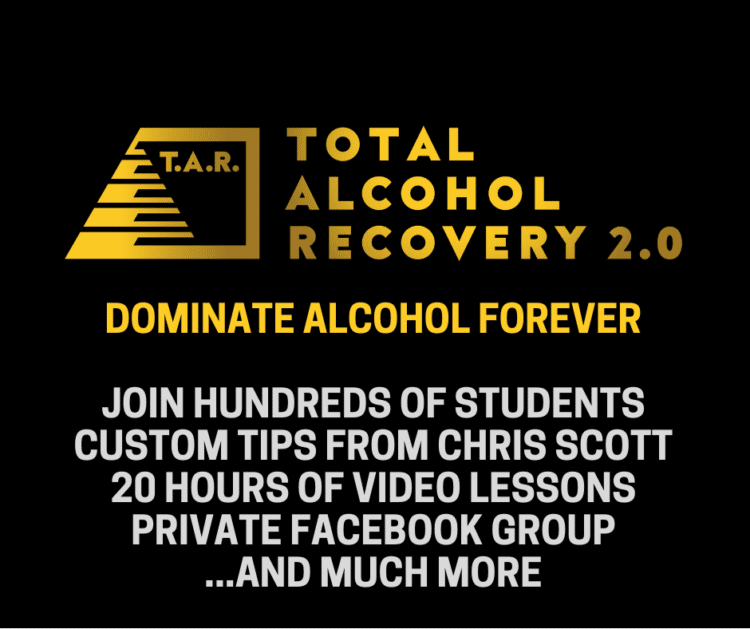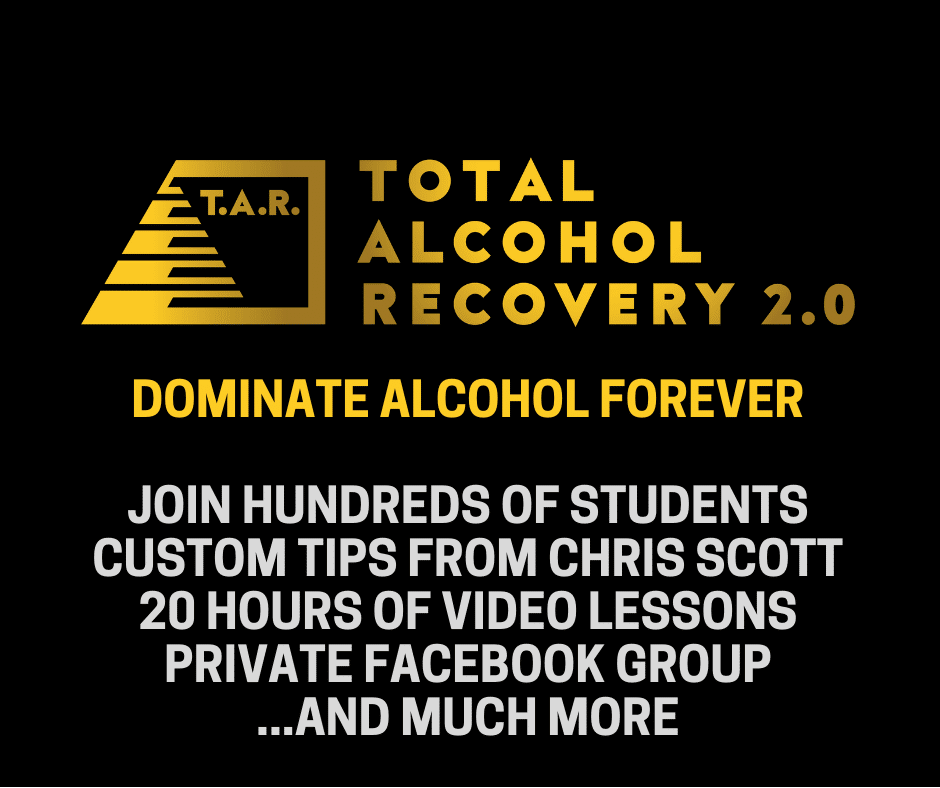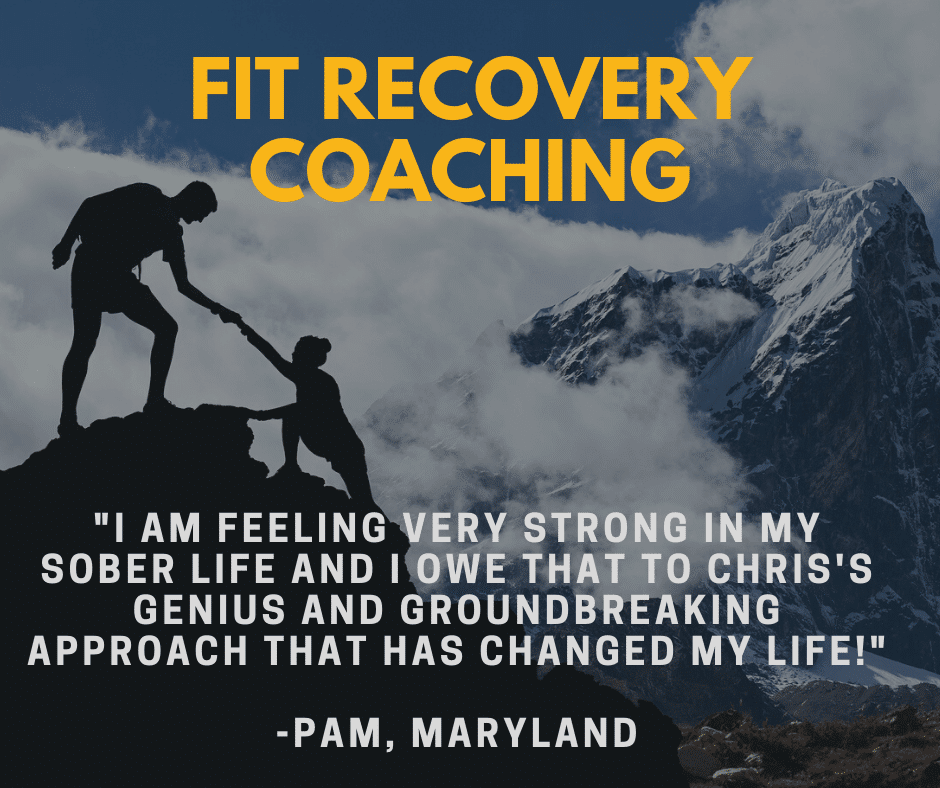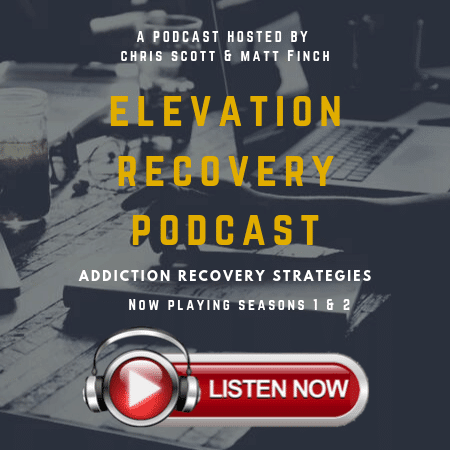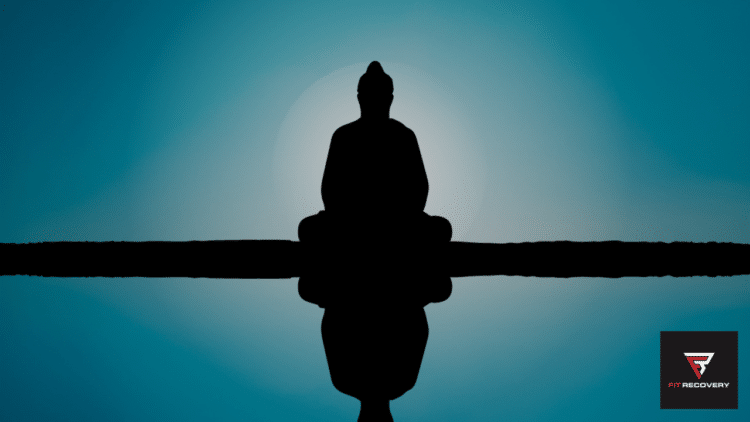
In episode 296 of the Elevation Recovery Podcast, Matt Finch discusses the topic of the five hindrances, taught by the Buddha. These hindrances hinder progress in meditation and in our daily lives. Matt reads from an article called “Mindfulness and the Five Hindrances to (Inner) Peace.”
When we can identify and be self-aware of these five hindrances, we can begin to lead more peaceful and grounded lives.
Links to Resources Mentioned in this Episode:
Here are some ways to learn from this episode:
- Watch the video
- Listen to the audio
- Read the transcript
- Right-click here and save as to download this episode on your computer
Matt Finch: Hi, my friend. Matt Finch here, introducing the extraordinary flagship program created by Chris Scott, the founder of Fit Recovery. This is a one-of-a-kind online program for dominating alcohol through biochemical optimization, mindset, and more. Why continue to test out trial and error when you could follow a powerful and proven 100% customizable system? Get instant access to over 20 hours of step-by-step video instruction, the ability to ask your questions of Chris Scott and his head coach, Matt Finch, that's me, and the rest of the life-changing and transformation-catalyzing features and benefits included in the program. To learn more, read or watch testimonials, and get started, visit fitrecovery.com/course, and to save an additional $25, use coupon code 444 at fitrecovery.com/course.
Announcer: Thanks for tuning in to the Elevation Recovery Podcast, your hub for addiction recovery strategies, hosted by Chris Scott and Matt Finch.
Matt Finch: This is episode 296 of the Elevation Recovery Podcast. I'm your host, Matt Finch, and joined with me today is my sidekick and green-cheeked conure parrot, Papaya. We are both very excited to bring you this fascinating topic, because it can help with quitting an addiction, really can help with the early recovery phase, and life beyond as well. Really, it's all about making you have more inner peace, more groundedness, more calmness and relaxation, more focus, more purpose, more gratitude, character development, and so much more. It's really, really effective.
The topic for today is something called the five hindrances. The five hindrances were taught by Gautama Buddha, the founder of Buddhism, around 2,500 years ago. And after reading through many different articles online about this, I found one perfect one to read for you today. It is on the website called healthpsych.com, and the title of the article is Mindfulness and the Five Hindrances to Inner Peace. What you're going to find right away from the very get-go of this episode and this article I'm going to read is just how applicable this topic is to overcoming and transcending an addiction, to getting through the early recovery phase and not slipping, not relapsing, not returning back to active use, and it looks like it's time for me to get right into it, because the workers outside with their heavy machinery just started, and so without further ado, here are the five hindrances and how you can use these concepts and strategies to radically improve your life.
Mindfulness and the Five Hindrances to Inner Peace, by Kim Pratt, LCSW. "All kinds of things can hinder or obscure a sense of inner peace. Whether a serious matter like conflict with a loved one, or a more minor inconvenience, like being stuck in traffic, when things don't go our way, we don't like it. In Buddhist psychology, the concept of the five hindrances sheds light on what gets in the way of us feeling as peaceful as possible, and making healthy choices regardless of the particular circumstances we face.
"The five hindrances, known as sensory desire, anger and aversion, restlessness and worry, sloth and torpor, and doubt, refer to the key mental states that stir up our body and mind in ways that can lead to emotional or behavioral difficulties. While its original intent was to explore hindrances to the practice of meditation, the principles can be applied to everyday life. The point of this theory isn't to minimize the difficulties and stress that are unavoidable in life. Rather, it's to help us work more effectively with them.
"The five hindrances. One, sensory desire, seeking pleasure through one of the five senses, sight, smell, hearing, taste, and touch, also referred to as the wanting mind. Wanting things, food, love, comfort, a new bike, or just about anything else you can imagine, is a core part of the human experience, and the first of the five hindrances. There's a direct relationship between the degree of want and potential for suffering. The bigger the want, the greater turmoil experienced when we don't get it, and also during our quest to obtain it. Even minor desires can create a sense of uneasiness by insinuating that something is lacking. In the modern world, we're inundated with messages telling us we need more things, so for most, sensory desire is a strongly-honed mental state. When it's particularly strong, it can manifest as addiction.
"Two, anger and aversion. Ill will toward another, oneself, or some type of experience. The not-wanting mind. From the Buddhist psychology perspective, anger is essentially the opposite of wanting. It involves a dislike or aversion to our experience, some type of dissatisfaction or resentment. 'I can't stand this traffic,' or 'He/she needs to act differently in order for me to be happy,' or 'If only X stopped happening, I could calm down.'
"Anger often arises when we take things personally, failing to recognize the deeply impersonal nature of virtually all things. Of course, feelings of anger may be justified, as is the case when one is harmed or treated unfairly, however, we often add layers to the anger or ill will, making it bigger than it has to be. When we harbor anger or resentment, we suffer greatly because we're essentially at war with ourselves. Upon further examination, anger often turns out to be related to an underlying primary emotion, like fear, sadness, or shame.
"Three, restlessness and worry, the inability to rest in the present moment, feelings of agitation. This hindrance takes the form of worrying about the future, fretting over the past, or constantly searching for things to do. Our human minds are thought-producing machines, for better and for worse. Researchers estimate that we have somewhere between 12,000 and 60,000 thoughts per day, and a majority of these are the same old recurring thoughts. Some Buddhist teachers refer to this as playing the top 10 tunes over and over again. We can't seem to get on another channel.
"When we are caught up in the hindrance of worry and restlessness, it's easy to bounce to and fro, often between a place of hope and fear. We hope for something new or better, and fear that we won't get it, or that we're missing out on something, as the trendy acronym of FOMO illustrates so well, fear of missing out. When we're experiencing this hindrance of restlessness, we tend to be quite externally focused, always looking for the next best thing outside of ourselves. As Michael Liebenson Grady from the Cambridge Insight Meditation Center writes in Tricycle Magazine, 'We need to learn to recognize our insatiable craving for new experiences. Being ashamed of our cravings doesn't help, but justifying or denying them doesn't help either. Instead, we should learn to be with our situation as it is, rather than moving away from it.' This being with experience, in contrast to the doing mode we're so accustomed to, can free up our minds to go to a deeper, more peaceful place.
"Four, sloth and torpor. Thoughts and feelings related to boredom, low energy, and inactivity. Sloth and torpor sounds so medieval. Nevertheless, these feelings are common, referring to both the physical and mental dullness or sluggishness that we feel even when we don't need to sleep or rest. As Buddhist teacher Gil Fronsdal notes, these feelings can arise when people are lacking the constant stimulation they are accustomed to in modern times, i.e. related to sensory desire, the wanting mind.
"For example, if an activity does not enhance self-image, it can be hard to get motivated. It may feel easier to just avoid it or take a nap instead. A lack of meaning or sense of purpose in life can also create these feelings of sloth and torpor. Setting a small goal, moving our bodies, or deliberately trying to see the newness, the freshness in each experience, can all help with these feelings of ennui or disengagement that are the hallmarks of this hindrance.
"Five, doubt, excessive skepticism, or indecision. When we're caught in the grip of uncertainty, the hindrance of doubt can be particularly strong. Us humans really dislike uncertainty. In fact, research suggests that in situations with unpredictable outcomes, people prefer bad news over no news at all. Life is full of uncertainty, yet most of us living in the modern world are trained to believe that we can and should try to control everything. Learning to find balance, let go, and cultivate a sense of trust and faith are all necessary components of inner peace. Sure, we all like control, and there's nothing wrong with that, but we lose sight of what's healthy and realistic, that our greatest control rests in how we relate and respond to our circumstances, more than the actual circumstances themselves.
"Of course, a healthy dose of critical thinking, probing and questioning, is both normal and necessary throughout life, but it becomes deleterious when taken to the extreme. Difficulty making commitments is one manifestation of doubt. Some Buddhist scholars differentiate between small doubt, a hindrance, and the great doubt of the don't know mind. Taken from the Korean Zen tradition, this questioning is believed to be healthy and lead to openness.
"Working with the five hindrances. Working with these mind states of the five hindrances can help increase feelings of wellbeing, as well as skillful action in the world. When the hindrances are more at bay, we tend to not only feel better, but also to think more clearly. Below are some of the ways to work with the hindrances, using the tools of mindfulness, both informally as well as on the meditation cushion. One, simple naming. When working with the five hindrances, we must first cultivate awareness of when they occur, as a means of stepping out of our habitual ways of reacting.
"As others have noted, doing this can help us distinguish between actual needs, versus more transient wants or cravings. Look at the first hindrance of sensory desire. Wanting something isn't always a bad thing. It can be necessary to survival. If you're truly hungry and you want food, that's your body's natural way of telling you something important, you need to eat, but if you've had enough nutrients for the day and you're still craving a bar of chocolate, then you want to work with that craving rather than just give into it. You may find that underneath the desire for candy is a feeling of sadness, loneliness, or fear, that needs to be addressed through other means than ingesting a lot of sugar. That's a simple example of a difference between reacting habitually or unskillfully versus responding with awareness. Being able to name them when they occur is a good first step in liberating the mind from these patterns. It may seem simple, but the awareness, the naming, gives us more space and time to reflect.
"Two, metaphor of the larger container. When we're in an emotionally distraught or stuck place, we can feel glued to our experience. For example, when you're angry, worried, doubtful, or desirous, it can feel all-consuming and make it hard to think about anything else. It's this limited, close-up view that fuels much negativity and lack of perspective. Contemplative practices like meditation can help by providing a sense of spaciousness and healthy distance. It's like the analogy of salt and water. If you put a tablespoon of salt in a single glass, the water will taste very salty. If you put that same tablespoon into a large body of water, fresh water, of course, for the analogy to work, how does the water taste? Not salty at all.
"With this exercise, first find a quiet place where you won't be interrupted. Take five to 10 minutes to visualize yourself inside a very large container. Notice the hindrances you see in the container, the irritation, the angst, the doubt, et cetera, whatever it is that you're experiencing that's distressing. Describe what you see in detail, imagining its size, shape, texture, et cetera, then shift your focus to seeing what else is in your orbit, so to speak. You may notice that you have plenty of food to eat, a comfortable home, cherished relationships with others, a meaningful livelihood, and so forth. Paying attention to a more complete picture of our situation, what's hard and what's good, can be grounding. The metaphor of the larger container helps us do that.
"Three, the RAIN tool. The Insight Meditation Center of Redwood City, California, recommends what's known as the RAIN tool for working with the hindrances. RAIN is an acronym which stands for recognize, accept, investigate, and non-identification. This mindfulness exercise provides a structure for observing your experience, which can bring both insight and relief.
"Four, loving-kindness meditation. When we're gripped by any of the hindrances, but particularly with desire and aversion, honing a more wholesome state can create more peace and balance. The mindfulness practice of loving-kindness, known as metta in the Pali language, can provide both greater ease and perspective. The Cliff Notes version of this practice is to silently recite something along the lines of the following, with the intent of genuinely sending these kind, loving thoughts your way. 'May I be safe and free from danger. May I be healthy and free of disease. May I be happy, peaceful, and content. May I be free.' You then proceed to pick a person you easily feel love toward and send the thoughts their way. 'May you feel safe and free from danger. May you be healthy and free of disease,' et cetera. You can stick with one person, or proceed to send these thoughts of loving-kindness to other people in your life. Traditionally, the process is done in a step-by-step fashion, where you eventually send loving-kindness to strangers, and even people you have great dislike for, which can feel quite challenging, but also transformative.
"Five, gratitude practice. Similar to loving-kindness, gratitude or appreciation practices are a great counterbalance to times when we feel dissatisfied or insatiable. Studies suggest that gratitude practices can increase positive feelings, help us build better relationships, and even improve our physical health.
"Six, touchpoints meditation. In addition to the basic mindfulness of breath practice, the touchpoints meditation is another great tool that helps connect our body to our mind. When we're feeling trapped in doubt, restlessness, or anger, we're often over-analyzing a situation. Our minds are on overdrive. Connecting with our bodies allows for increased body-mind integration, a method that quiets the mind and helps us slow down and think more clearly.
"The touchpoints meditation, five to 10 minutes, is a simple practice whereby attention is placed on the parts of our body that are making contact, like our hands contacting our legs while sitting, our eyelids touching while eyes close, our feet meeting the ground, et cetera. As with anything, and in the spirit of mindfulness practice, see all of the above as experiments. Try some out, keep what works, and discard the rest."
All right, and that concludes this episode. Thank you so much, as always, for listening. I highly, highly recommend doing more in-depth research on your own about the five hindrances. It is really a helpful topic. When I learned about it and started researching it, I wondered how I hadn't learned about this much earlier in life, but better late than never. And with that being said, take care, and I'll see you on the next episode.
Chris Scott: Hey, everyone, Chris Scott here. If you liked the information on today's episode regarding supplementation and empowerment strategies for addiction recovery, then please subscribe to the Elevation Recovery Podcast, and leave us a rating and review on iTunes, and if you've benefited directly from this information, I'm confident in saying that you'll love the information-packed online courses that Matt Finch and I have created. Matt Finch's Ultimate Opiate Detox 4.0 is a six-module, 30-activity course that contains video lessons, written lessons, PDF downloads, worksheets, audios, and much more, and it has everything you could possibly need to know to conquer opioid addiction in the easiest and most comfortable way possible. My own course, Total Alcohol Recovery 2.0, is the most cutting-edge resource for anyone who wants to transcend alcohol and build their best lives.
To get these courses, to learn more, and to read testimonials, simply go to opiateaddictionsupport.com/ultimate. Again, that's opiateaddictionsupport.com/ultimate, for Matt's course. Or for my course, go to fit-recovery.com/course. Again, that's fit-recovery.com/course. You can also go to elevationrecovery.com to see the show notes for this episode.
Sign up to receive email updates
Enter your name and email address below and I'll send you periodic updates about the podcast.




